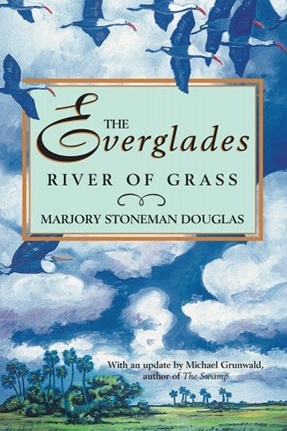As we celebrate Earth Day and Earth Month in 2024, it’s impossible not to focus on the climate crisis and its effects on our planet. I wrote a few years back on the need to find and share critical optimism in the face of this catastrophe, and on that note would recommend a vital new book: Dana Fisher’s Saving Ourselves: From Climate Shocks to Climate Action (2024). Fisher highlights a number of individuals and organizations modeling how we can collectively act, this Earth Day and every day, to fight for our planet and future, making her book as practically helpful as it is philosophically inspiring.
My goal in this Considering History column has been to argue for the manifold ways that what was been done in our past can inform and influence our present and future. And so alongside an important contemporary book like Fisher’s, on this Earth Day we also can read widely and deeply in the foundational and longstanding genre of American nature writing. Here I’ll highlight a half-dozen works and authors who have a great deal to tell us in 2024.
1. Faith in a Seed: The Dispersion of Seeds and Other Late Natural History Writings
Henry David Thoreau (1993)
Although this is the most recently published of the six works I’ll highlight here, it’s also the earliest, as it comprises a posthumous collection of Henry David Thoreau’s late-life nature writing. The works Thoreau published in his lifetime made him a defining influence for all subsequent American nature writers, but those works only scratched the surface of his observations and reflections on the natural world, and just as importantly on what humans can learn about ourselves through engaging with nature. We need such reflections now more than ever.
2. The Exploration of the Colorado River and Its Canyons
John Wesley Powell (1875-1895)
Thoreau wrote thoughtfully and movingly about the natural world he encountered all around him in his native Massachusetts. But another important goal of nature writing is to engage with, and thus help us seek to preserve, the true breadth and power of America’s natural wonders. The Civil War veteran, geologist, and explorer John Wesley Powell was one of the first Americans to encounter the wondrous landscape the Grand Canyon, and he documented that natural wonder extensively, first in an 1875 report and then in his 1895 book The Exploration of the Colorado River and Its Canyons. Powell warned of the effects of exploiting such landscapes.
3. The Land of Little Rain
Mary Hunter Austin (1903)
A nation as large as the United States features countless distinct settings, and reading nature writers illuminates the variety of natural worlds and what they have meant for the development of our country. No writer has captured the deserts of Southern California better than did the novelist, literary critic and patron, and outdoorswoman Mary Hunter Austin in her essay collection The Land of Little Rain — and because Austin was an impassioned advocate for the region’s Native American and Hispanic American communities, her book also makes clear how much the area’s natural and human worlds are interconnected.
4. The Everglades: River of Grass
Marjory Stoneman Douglas (1947)
In recent years, Marjory Stoneman Douglas has become tragically linked to the Parkland, Florida, high school that bears her name. But Douglas’s inspiring 108-year life certainly needs to be better remembered for its own sake as well, and at the heart of her long career as both a journalist and an activist was her advocacy for the unique South Florida landscape known as the Everglades. Produced in collaboration with geologist Garald Parker, River of Grass was one culmination of her research into the ‘Glades; but she built on that project for the remaining half-century of her life, truly earning the nickname “Grand Dame of Everglades.” As we fight to protect and preserve every part of our natural world, there are no better models than Marjory Stoneman Douglas.
5. A Sand County Almanac: And Sketches Here and There
Aldo Leopold (1949)
Aldo Leopold was a lifelong conservationist and forest service worker who became the first professor of game management at the University of Wisconsin; a year after his 1948 death, his son Luna (himself an influential geologist and professor at UC Berkeley) published Aldo’s observations of his Wisconsin natural world as A Sand County Almanac. The book is as lyrical and moving as the best nature writing, but it most importantly expresses Aldo’s concept of a land ethic: “A thing is right when it tends to preserve the integrity, stability, and beauty of the biotic community. It is wrong when it tends otherwise.” A “biotic community” means all the organisms that live together in an environment, including humans as an interconnected part of their ecosystems.
6. Braiding Sweetgrass: Indigenous Wisdom, Scientific Knowledge, and the Teachings of Plants
Robin Wall Kimmerer (2013)

There are many 21st century Americans who reflect the literary, scientific, philosophical, and communal traditions represented by these historical works, but none does so more clearly than Robin Wall Kimmerer, a Potawatomi writer, scientist, and director of SUNY’s Center for Native Peoples and the Environment. Kimmerer’s book, like all of her work, reminds us of all we have to learn from both our shared past and the natural world around us, and offers a bracing but hopeful vision of how we can confront the challenges of our present and fight for a better future. There are no more urgent goals than those here on Earth Day 2024.
Become a Saturday Evening Post member and enjoy unlimited access. Subscribe now








